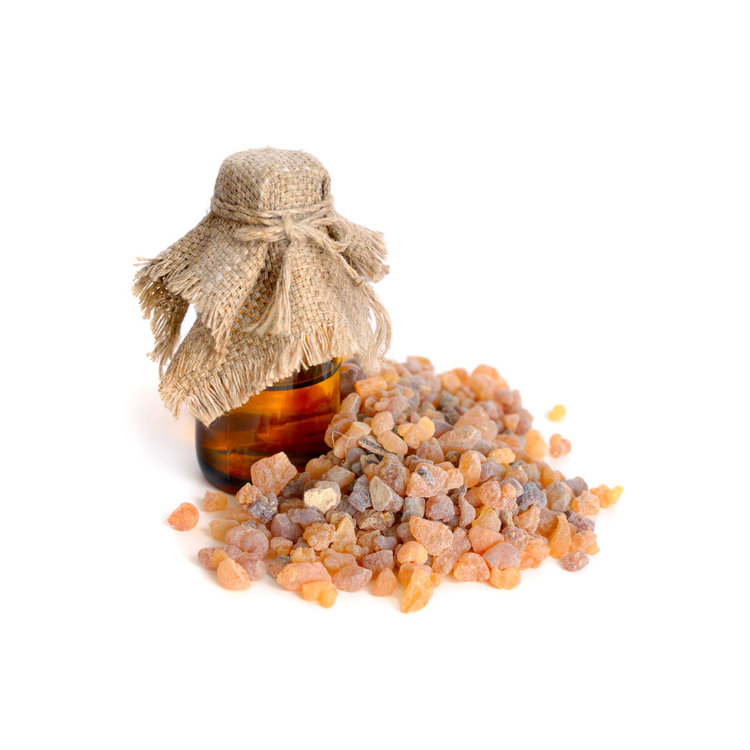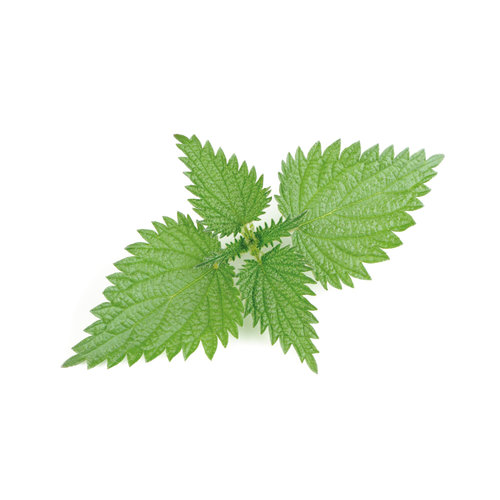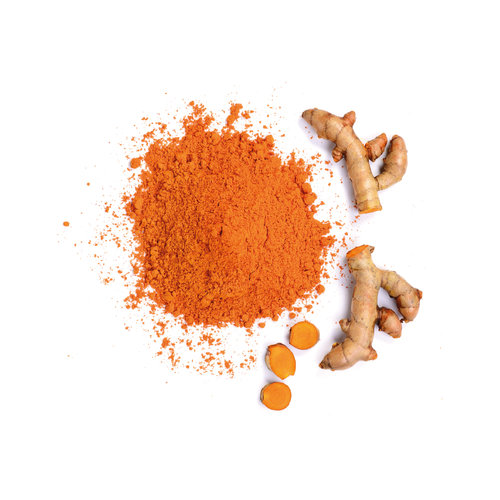Osteo-Arthritis affects more than 50% of people over the age of 65 [1]. It is characterized by low-grade inflammation and eventual degradation of the joint (especially the cartilage). This will ultimately lead to reduced movement, and pain in the joint. Interestingly, arthritis has been noted in nearly all vertebrates (organisms with a backbone), and indications of arthritic conditions have even been found in dinosaur skeletons.
The pain from arthritis can be debilitating to many individuals, and modern treatments involving pharmaceutical painkillers can bring with them a series of unfortunate and uncomfortable side effects. This is why it is important to find natural, effective treatments for this condition with the least amount of side effects possible.
The causes of arthritis can vary greatly, but generally, come with the normal degeneration of age. Heavy use of the joint as with many athletes is common as well. Genetic factors, injury, obesity, and poor nutrition can all contribute to the development of arthritis.
The pathology of arthritis
The first stage of osteoarthritis involves inflammation and damage to cells called chondrocytes. These cells are located in the joints and are responsible for maintaining the cartilage. This cartilage is what allows the joints to move without allowing the bone to rub directly against other bones.
Damage also occurs to the synovial cells, which are responsible for the synovial fluid that lubricates the joint. Without either of these cells, the joints simply would not be able to move freely and painlessly as is necessary for movement! In the presence of inflammatory factors, both the chondrocytes and synovial cells begin releasing even more inflammatory cytokines subsequently furthering the process. Factors such as IL-1, TNF-alpha, iNOS, PGE2, 5-LOX, NF-kB, and increased catabolic activity in the joint work off each other in a highly complex process resulting in osteoarthritis as we know it. Free radical damage produced as byproducts of this inflammation damages the cartilage and synovial cells further. This is why treating these inflammatory pathways as well as directly improving the chondrocytes and synovial cells are the most effective in the long term and preventative treatment of arthritis. It actually treats the cause of the arthritis, and only reduces pain as a sort of beneficial "side effect". [1].
Topical Treatments
One of the oldest methods of relieving arthritis was with the use of "rubefacient" botanicals. Rubefacients cause redness and swelling on the surface of the skin, which then stimulates the bodies natural antinflammatory response, and stimulates the microcirculation in the area which helps carry fresh oxygenated blood into the area, and removes toxic free radical saturated blood out of the area. This is only useful for osteoarthritis however and should never be used on rheumatoid arthritis which is a very different condition.
Rubefacient Herbs to Use Topically:
Other Herbs to use Topically for Arthritis:
Birch
Regarding topical pain relievers, essential oils are often the most effective, especially in stubborn arthritic pain. Birch essential oil is my personal favourite, which contains the powerful pain killing salicylates. This is the chemical that aspirin was derived from. The best way to apply birch essential oil is mixed in with a carrier oil or in the form of a salve. Other essential oils such as peppermint, eucalyptus, and citrus oils can also help relieve pain from arthritic joints. See willow below for a deeper discussion on the effects of salycilates.
Frankincense
Frankincense (Boswellia serrata) is one of the bet herbs for dealing with the specific inflammatory cascade associated with osteoarthritis.
It inhibits 5-LOX, while only delivering a minor inhibition of PGE2 production. It down regulates TNF-Alpha through an inhibition of NF-kB, and Inhibits IL-1.
This could not be a more effective anti-inflammatory action for the processes involved with osteoarthritis. [1]
You may also take frankincense extracts (I do not mean essential oils!) internally for a similar result.
St Johns wort acts in a similar way as this.
Stinging Nettle
Stinging nettle (Urtica dioica) is used topically for arthritis in a process referred to as "urtication". This basically involves rubbing the leaves over the joint, which allows the stinging hairs on the leaves to penetrate the skin.
This sounds strange, but the chemicals contained within the stinging hairs are perfectly suited to relieving the pain associated with arthritis. (I will post a separate article on how this works in the future as it is a very complex interaction).
Some people even grow a small nettle plant in their house and pluck a leaf from it from time to time to run over the joint. Nettle leaf is also incredibly useful for the inflammation from arthritis when taken daily as a tea. Read more about stinging nettle.
Cannabis
Cannabis is an incredibly potent pain killer and is highly specific for arthritic type pain. Cannabidiol (CBD) is the most potent in this effect, and can be extracted and concentrated in high amounts. Cannabis infused oil, and especially salves made with cannabis are extremely valuable for those suffering from arthritic pain. The oils and waxes contained within salves help the constituents of cannabis stay in contact with the skin for longer, and can greatly improve the length of time cannabis extracts will work for.
Cannabis extracts, especially extracts high in CBD are useful internally as well via liquid extracts, or in tablets or capsules.
Internal Treatments
Along with the topical treatments, it is highly beneficial to treat alongside with internal treatments. This way, the pain relieving, and anti-arthritis chemicals can circulate throughout the body, and reach deeper levels than the topical treatments can reach alone. Not only that, but it may be difficult or unreasonable to apply topical treatments every couple of hours throughout the day. Things like work, sleep, application issues may prevent one from being able to apply the topical treatment at any given time. Using internal anti-inflammatory, and pain relieving botanicals can help to stretch the length of time one is able to wait in between treatments topically.
Try these herbs internally alongside the topical treatments:
Turmeric
Turmeric (Curcuma longa) is one of the main ingredients in curry. It is actually a potent systemic anti-inflammatory and pain killer and has a long history of clinical us for arthritis. This herb should be taken in supplemental form over the long term to really reap its pain killing benefits.
It appears to work mainly through the constituent curcumin, which has been shown to inhibit the activation of the inflammatory transcription factor NF-kB. It also reduces the activity of COX-2, LOX, and iNOS through direct transcription pathways rather than by inhibiting the enzyme after it has been produced. [4].
Willow Bark
Willow (Salix alba) bark contains the chemical salycylic acid. This molecule is often referred to as "natural aspirin" because it is in fact the chemical that led to the creation of aspirin (acetyl-salycylic acid).
In a similar fashion to aspirin, the naturally formed salicylic acid is able to reduce the inflammatory molecule PGE2, by inhibiting the expression of COX-2 at the level of gene transcription. [5]. This makes it much more powerful than Inflammatory inhibition at the already formed enzyme levels.
Salycilic acid from willow bark differs from aspirin in that is does not have quite the same effect on the similar COX-1 pathway, which has been associated with the development of gastric ulcer formation, one of the major side effects of aspirin. [1].
St. Johns Wort
St. Johns Wort (Hypericum perforatum) has many uses, namely depression and anxiety or neuralgic pain. When it comes to managing osteoarthritis, the main chemical sugegsted to be responsible is hypericin.
This chemical has been found to inhibit 5-LOX which as mentioned earlier is beginning to be understood as a primary pathway for reducing the progression of osteoarthritic inflammation. [6].
A whole plant extract of St. Johns wort was also found to inhibit COX-2 which leads to a reduction in the inflammatory molecule PGE2. [1].
Devils Claw
Devils claw (Harpagophytum procumbens) is a native of the African savannah, specifically the Kalaharis in South Africa, Nambia, and Botswana [1].
This plant is especially useful for osteoarthtritic pain and inflammation, and is actually just as useful externally as it is internally.
Similarily to many of the other herbs useful for osteoarthritis, it is a potent inhibitor of COX-2, only this time through a different mechanism (12-O-tetradecanolyphorbol-13-acetate induced COX-2 expression), and has comparable analgesic actions to aspirin. [1].
Summary
Managing osteoarthritis can be tough, but is not impossible. Most of the treatment will involve pain management, and reducing the inflammatory factors 5-LOX and COX-2.
Improving the health of the chondrocytes, and synovial fluid by consuming a healthy intake of omega-3 and omega-6 fatty acids, as well as sufficient but not excessive exercise will also go a long way in treating and preventing this condition successfully.
Recent Blog Posts:
References:
- Bone K, Mills S. (2013). Principles and Practice of Phytotherapy. Elsevier health. China. (Pg. 557-565).
- Hoffmann, D. (2003). Medical herbalism: The science and practice of herbal medicine. Rochester, VT: Healing Arts Press. (Pg. 529-530)
- The Sunlight Experiments past research cited in this article: gotu kola, stinging nettle, ginger, and peppermint.
- Epstein, J., Sanderson, I. R., & MacDonald, T. T. (2010). Curcumin as a therapeutic agent: the evidence from in vitro, animal and human studies. British journal of nutrition, 103(11), 1545-1557.
- Wu, K. K. (2006). Transcription-based COX-2 inhibition: a therapeutic strategy. Thrombosis and haemostasis, 95(04), 417-422.
- Feißt, C., Pergola, C., Rakonjac, M., Rossi, A., Koeberle, A., Dodt, G., ... & Franke, L. (2009). Hyperforin is a novel type of 5-lipoxygenase inhibitor with high efficacy in vivo. Cellular and molecular life sciences, 66(16), 2759-2771














